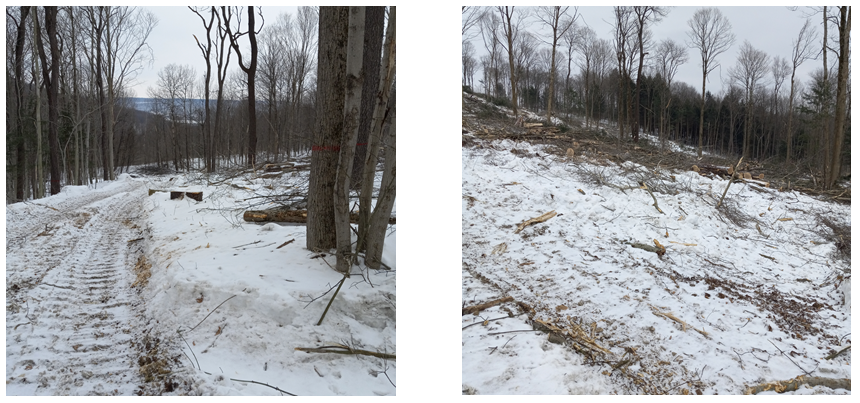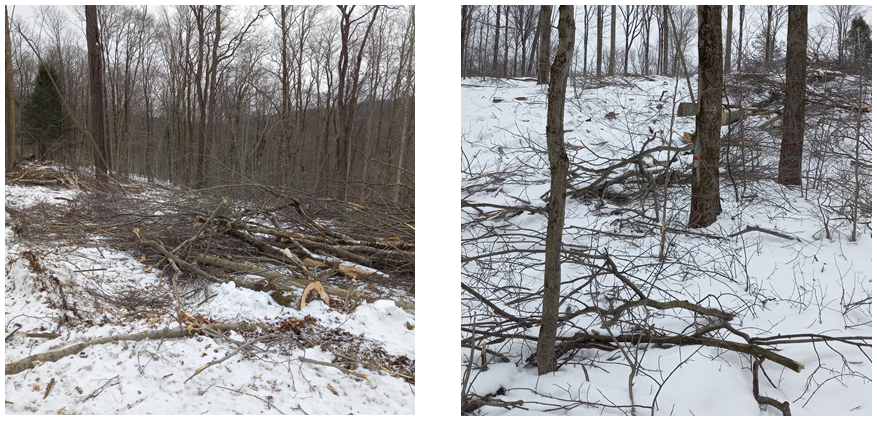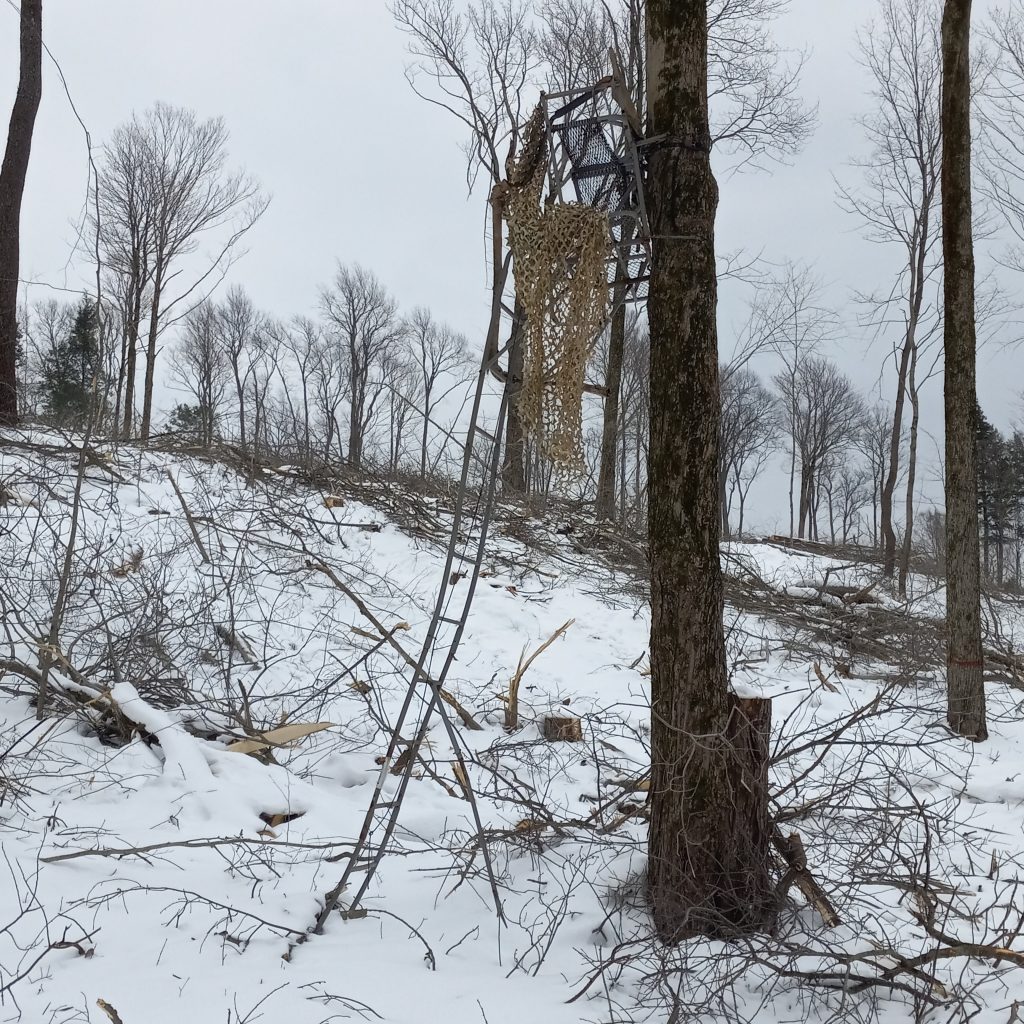When I purchased my house 25 years ago, I learned that at one time the property had been a farm. Over the years, relatively large pieces of the property had been divided, sold, and houses built on those pieces. Most were 10 to 15 acres but one very large piece was a 75 acre woodlot. The woodlot had been logged rather aggressively in the 1960’s and had been left to grow back naturally. This was the state of the woodlot when I first encountered it, natural regrowth without a plan. There seemed to be few marketable trees to my eyes but there were lots of small trees, some brush, and many wild blackberry bushes.
The wood lot was a pleasant place to wander in the spring and summer. The old logging access “roads” left by the loggers made obvious wide paths for walking that mostly encircled the property. It was a fine location for landscape photography, berry foraging, and bird observation. The woodlot was off limits in the fall though, because the timber company that owned the property had leased the hunting rights so this was not a time for benign wandering. Over the years I met several of the leaseholders, some were pleasant and wanted to be good neighbors while others bordered on antagonistic. In either case, hunting season was not the time of year to even consider walking through the woodlot.

Recently I learned that the timber company that now owned the woodlot (it had changed ownership at least twice over the years) intended to cut the property in what they termed a “deer management” cut. They wanted to harvest trees in January, February, and March when the ground was has hard as possible (frozen) to try to minimize ruts in the land that would lead to erosion. This is a scary time because there is really no way to know what damage to the land could occur or what the landscape will look like when the work is finished. At this point I only know that the woodlot I have wandered for years will look radically different and may or may not have a significant impact on the birds and animals in the area.

After walking through the area on a day the logging crew was not working, I can see some of the completed work. The significant tree removal is the easiest change to note. There are several equipment trails through the area but those were made after several large snowfalls, so the trails are on top of the snow and have frozen solid. This means that there should be few visible remnants of the actual trails after the snow and ice melts. The trails were also primarily where the tracks from 60 years ago existed and I could see that the deer seem comfortable walking in the same tracks they have used for years. There are a number of brush piles throughout the property that will make good habitat for birds and small mammals while giving the deer access to browse. More of the work will be revealed when the snow melts.

There is also some evidence remaining from the former hunting leaseholders such as tree stands and tent ground blinds. A number of old trees still stand to act as “seed trees” to help propagate the next generation. Overall, the process seems to have been thoughtful as far as I can tell, but more will come to light in the spring and summer. The woods are changed from what I have known and only time will tell if the work has been an improvement or a detriment to the land.
